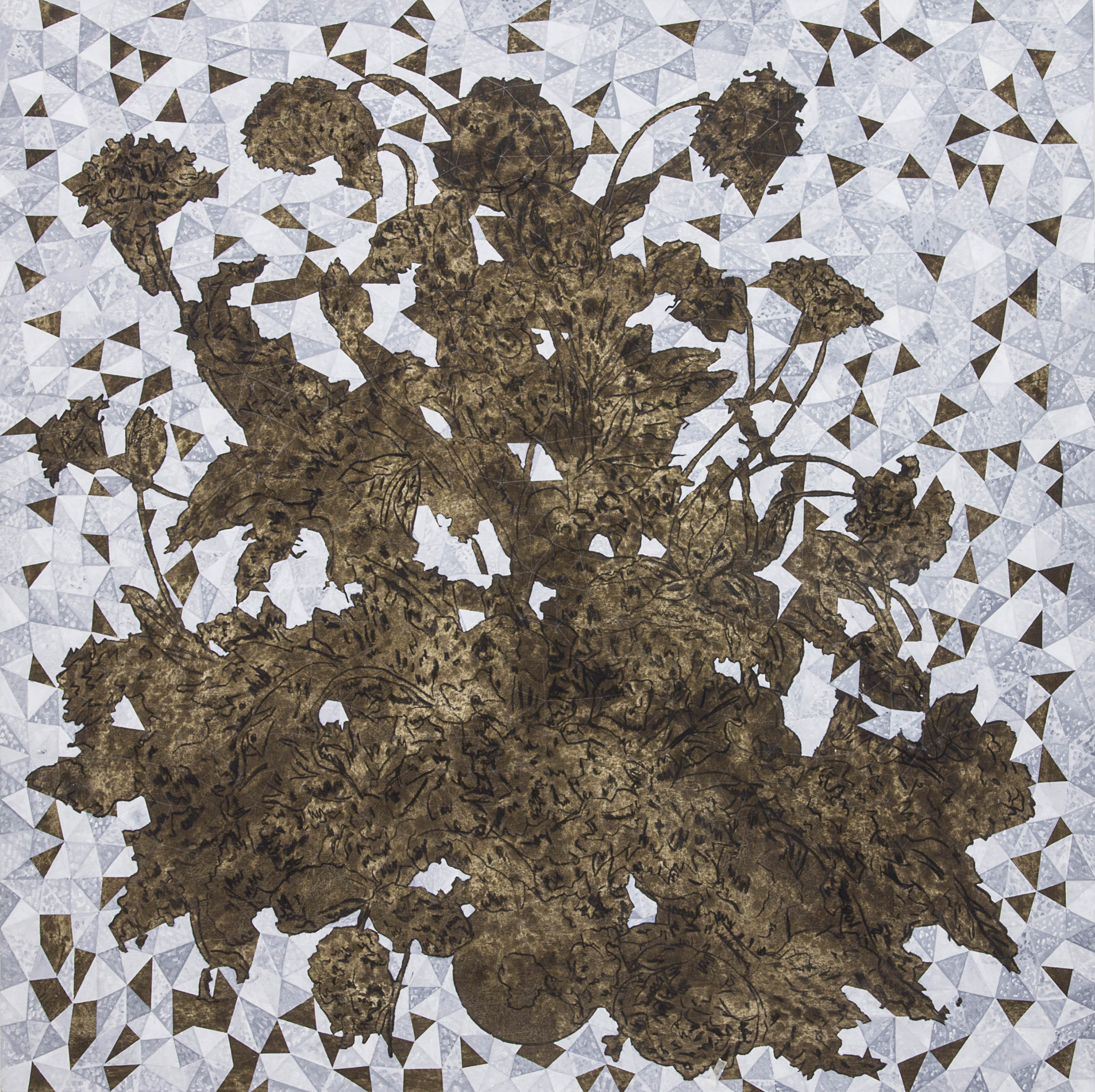








Samson’s new body of work, Ubugqoboka Magqoboka, builds upon his last exhibition at blank, Thirty Pieces of Silver (2015), in which he presented a series of paintings depicting flowers, fruit and skulls, reminiscent of the Vanitas genre of Dutch Renaissance painting. The refined floral arrangements restrained by their Classical vases which appeared in Samson’s previous work have become wild and they overflow in these new paintings. This impression of dynamism is extended by the detailed lines of foliage, sketched in pencil and chalk, which appear simultaneously to burst through and recede from the geometric shards of oil paint that surround them. Ubugqoboka Magqoboka also introduces a new, sculptural element to Samson’s work: included in the installation are the broken fragments of cast concrete replica statues in Classical Greek or Roman style, evoking the ruins of an empire.
In the process of making these new works, Samson contemplated South Africa’s colonial history and the effect of Christian missionary schools on the identities of their African students, whom they baptized and educated in the Western tradition. The influence of the church is apparent in the work of artists who attended missionary schools. Together with Christian belief, Western values had been instilled in these black students, but they were treated as inferior by white Europeans. Simultaneously, they were distrusted by some black Africans who believed that they had turned their backs on their communities and their value systems.
This distrust is reflected in the title of Samson’s exhibition, Ubugqoboka Magqoboka. The Xhosa people who had been Christianised and educated by missionary schools, were referred to as umagqoboka, and their ‘un-African’ way of doing things termed ubugqoboka. Samson has portrayed this identity conflict, and its manifestation in South African art through his disintegrating references to Classical and Biblical imagery. Thirty Pieces of Silver used Western-style painting to question South Africa as the product of colonialism. Ubugqoboka Maqgoboka questions painting itself as a colonial product.
In the process of making these new works, Samson contemplated South Africa’s colonial history and the effect of Christian missionary schools on the identities of their African students, whom they baptized and educated in the Western tradition. The influence of the church is apparent in the work of artists who attended missionary schools. Together with Christian belief, Western values had been instilled in these black students, but they were treated as inferior by white Europeans. Simultaneously, they were distrusted by some black Africans who believed that they had turned their backs on their communities and their value systems.
This distrust is reflected in the title of Samson’s exhibition, Ubugqoboka Magqoboka. The Xhosa people who had been Christianised and educated by missionary schools, were referred to as umagqoboka, and their ‘un-African’ way of doing things termed ubugqoboka. Samson has portrayed this identity conflict, and its manifestation in South African art through his disintegrating references to Classical and Biblical imagery. Thirty Pieces of Silver used Western-style painting to question South Africa as the product of colonialism. Ubugqoboka Maqgoboka questions painting itself as a colonial product.